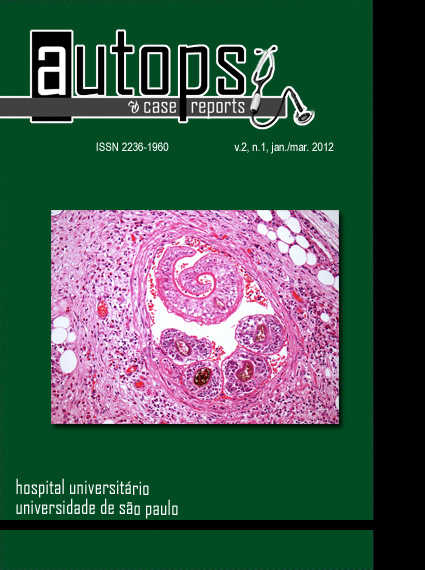Aortic dissection-induced acute flaccid paraplegia treated with cerebrospinal fluid drainage
DOI:
https://doi.org/10.4322/acr.%25y.26083Keywords:
Aortic diseases, Aneurysm, dissecting, Paraplegia, Cerebrospinal fluid.Abstract
Acute aortic dissection is a life-threatening event in which prompt and correctdiagnosis is associated with better outcomes. In most cases, there is chest
or back pain. However, in rare cases, patients have little or no pain and
other symptoms are more conspicuous at presentation. The autors reports
the case of a 47-year-old female patient who sought medical attention for
sudden-onset paraplegia. The physical examination was normal except for
bilateral lower limb flaccid paralysis, with abolition of deep tendon reflexes and
paraesthesia in both feet. Computed tomography showed aortic dissection,
with partial thrombosis of the false lumen, starting after the emergence of the
left subclavian artery and extending, toward the bifurcation of the aorta, to the
left iliac artery. After cerebrospinal fluid drainage, the evolution was favorable.
Downloads
Download data is not yet available.
Downloads
Published
2012-03-30
Issue
Section
Article / Clinical Case Report
License
Copyright
Authors of articles published by Autopsy and Case Report retain the copyright of their work without restrictions, licensing it under the Creative Commons Attribution License - CC-BY, which allows articles to be re-used and re-distributed without restriction, as long as the original work is correctly cited.
How to Cite
Adam, E. L., Staniak, H. L., Sharovsky, R., Silva, A. F. da, Castro, C. C. de, & Bittencourt, M. S. (2012). Aortic dissection-induced acute flaccid paraplegia treated with cerebrospinal fluid drainage. Autopsy and Case Reports, 2(1), 25-28. https://doi.org/10.4322/acr.%y.26083



